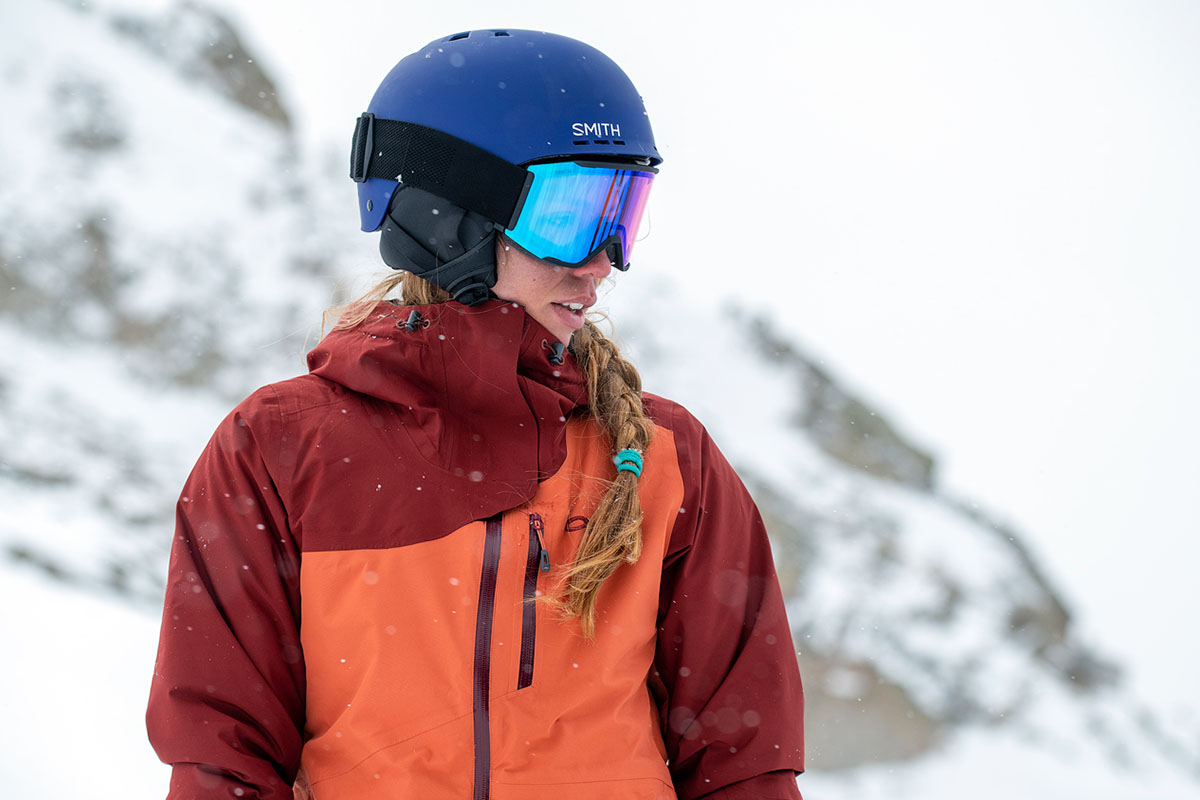
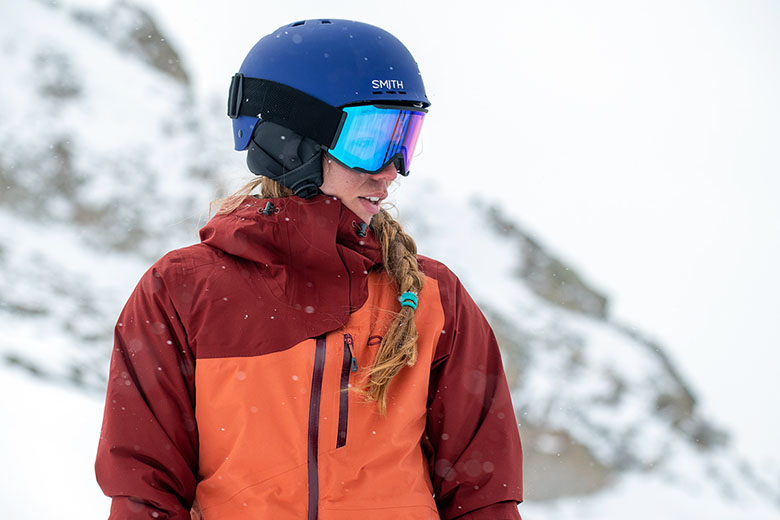
A quality pair of ski goggles can do a lot to improve visibility on the slopes, but if they get all fogged up, it doesn’t really matter what you’re wearing. The good news is that there are a number of steps you can take to avoid this frustrating situation, which we break down below. The primary aim is to keep air flowing and limit moisture buildup, and a range of factors—from avoiding overdressing to allowing your goggles to dry completely after each use—come into play. Finally, if your old pair is ready to be retired and you're on the hunt for something new, check out our article on the best ski goggles.
Editor's note: This article was updated on February 3, 2025, to ensure that all statements and product recommendations were up-to-date at the time of publishing.
Before diving in, it’s important to understand why goggles fog up in the first place. The science is fairly simple: When warm and humid moisture enters your goggles and comes into contact with the cold lens, the water vapor condenses into droplets and accumulates. Many of the tips below are aimed at maximizing ventilation to reduce the amount of moisture entering your goggles and minimizing any temperature differences between the inside of your lens and outside environment. Other preventative measures include proper drying and storage techniques to preserve your goggle’s anti-fog coating, which can go a long way in retaining long-term optical clarity.
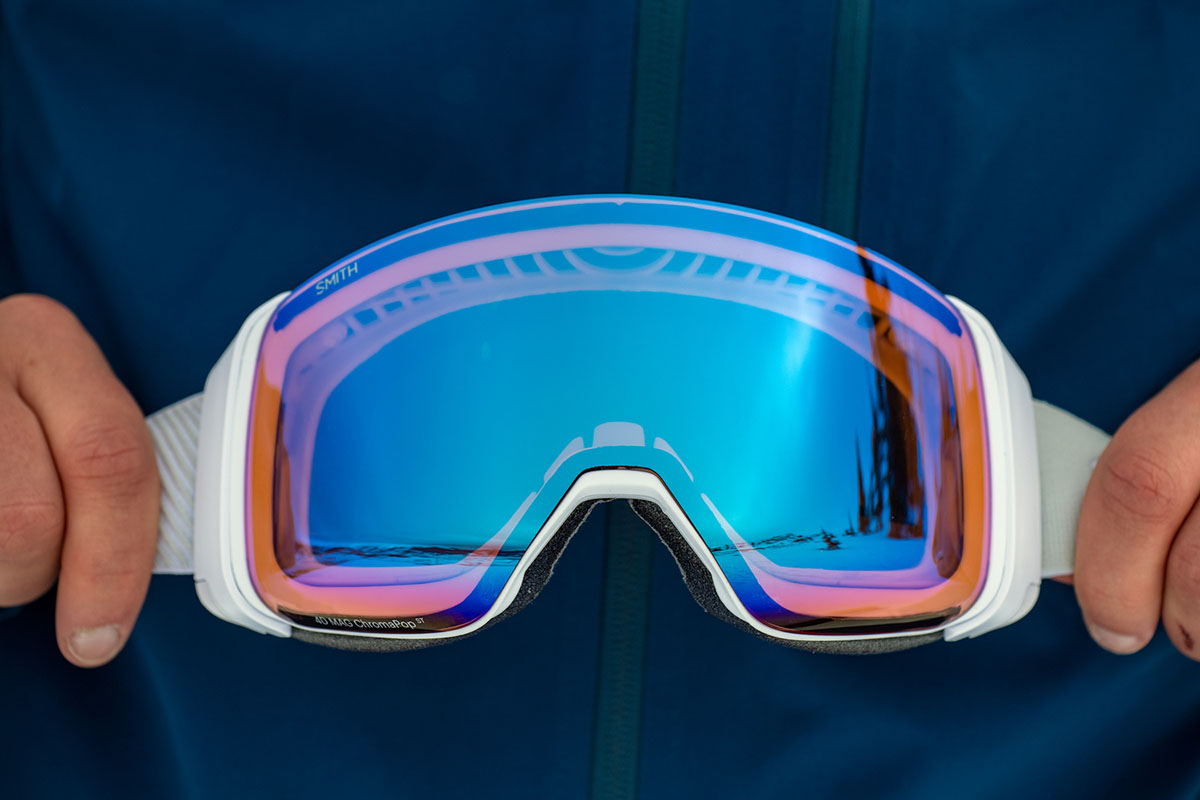
The first step in minimizing fogging is to choose a quality snow goggle with well-executed ventilation. First and foremost, you’ll want to opt for a model with a double lens—similar in concept to a double-pane window—which comprises most modern goggles. Frame design is also important: If air can move effectively through the sides, top, and bottom, condensation won’t be able to build up as quickly inside. All else being equal, a goggle with more vents will fog up less frequently than one with fewer, although it’s important to make sure that your helmet doesn’t block the vents (we recommend trying them on together). Finally, lens shape can have an impact: Spherical lenses—which curve both horizontally and vertically—tend to be the best at preventing fog due to their bulbous shape that positions the lens farther from your face, while cylindrical lenses (which are flat vertically) are often less effective. Of course, there are exceptions to this rule, and a goggle’s venting design is the biggest contributor.
A final piece of the goggle design puzzle is an anti-fog coating. This hydrophilic (i.e., moisture-attracting) barrier is applied to the inside of the lens and designed to disperse any moisture across the surface so that light can still make its way through (any water that accumulates will be film-like rather than droplets, which makes it much easier to see). We’ve found Smith’s anti-fog treatment to be particularly efficient and long-lasting, and it's featured on models from their premium I/O Mag to the budget-friendly Frontier. Plenty of other brands excel here, too, including Anon, Glade, and Oakley. To maximize effectiveness, you’ll want to make sure to get a good fit with a solid, gap-free seal at your forehead and cheeks. And keep in mind that any excess material inside your lens will impact airflow, so if you need your glasses to see properly, consider wearing contacts under your goggles or purchasing prescription inserts from a brand like SportRx.
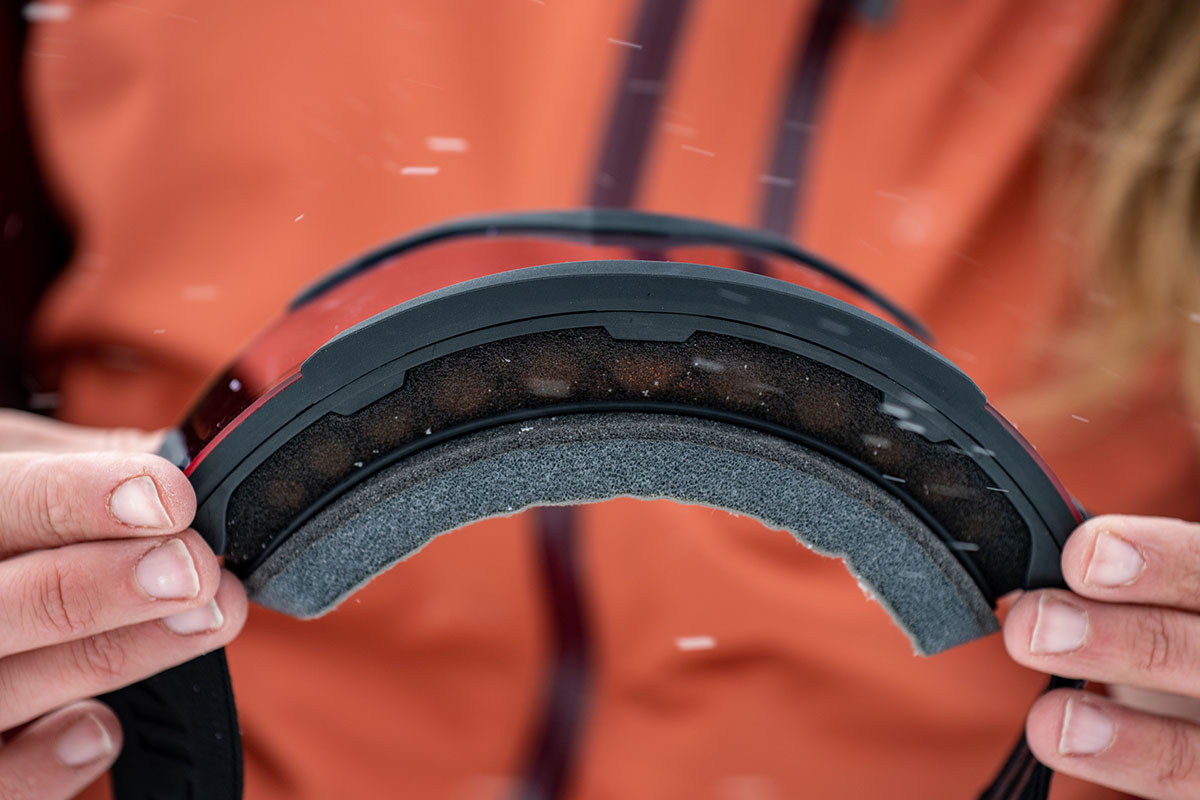
Goggles are just one part of the equation, and a well-ventilated ski helmet can help considerably with keeping air moving and preventing you from overheating. The first indicator of overall ventilation is the total number of vents, with pricier lids typically boasting more than budget designs. For instance, Anon’s top-of-the-line Merak ($320) features a generous 19 vents, while their budget-friendly Raider 3 ($90) has only six. Another key distinction to look out for is whether or not the vents are adjustable. Fixed vents can allow unwanted moisture and cold air inside, while adjustable vents allow you to better regulate temperature depending on output and conditions. Taken together, an effective helmet venting system should direct air from your goggles through intakes at the front and release the heat out the top and back.
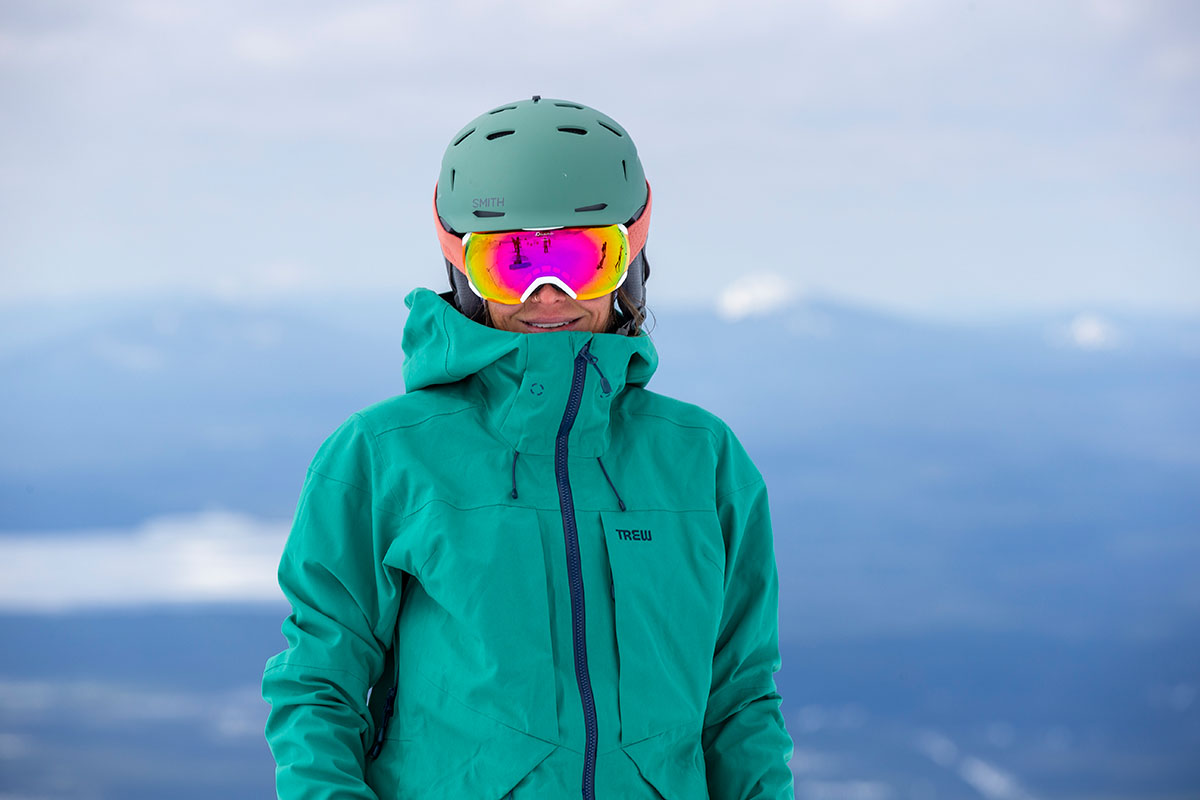
We’ve all been tempted to pop our goggles off and wipe snow or moisture off our inner lens on inclement days or after a fall, but be forewarned: This can cause damage. In addition to potentially scratching or smudging a pricey lens, wiping also can degrade your goggle’s anti-fog coating or film. As hard as it may be, we recommend allowing your goggles to air dry whenever possible.
Many premium options also come with an included microfiber storage bag or wipe, which can help blot light powder off or clear up any water streaks if the situation is particularly dire. Never scrub or use paper products like paper towels or napkins, as these are much more abrasive and can damage your lens. Smith offers a couple cheap solutions in their NoFog cloth (coated in a strong detergent to keep your lens clean) and Snow Eraser (a soft sponge to wipe away moisture). But again, leaving your lens alone when it gets wet is the safest bet for boosting its lifespan and preserving the anti-fog treatment (we cover the reapplication process below).
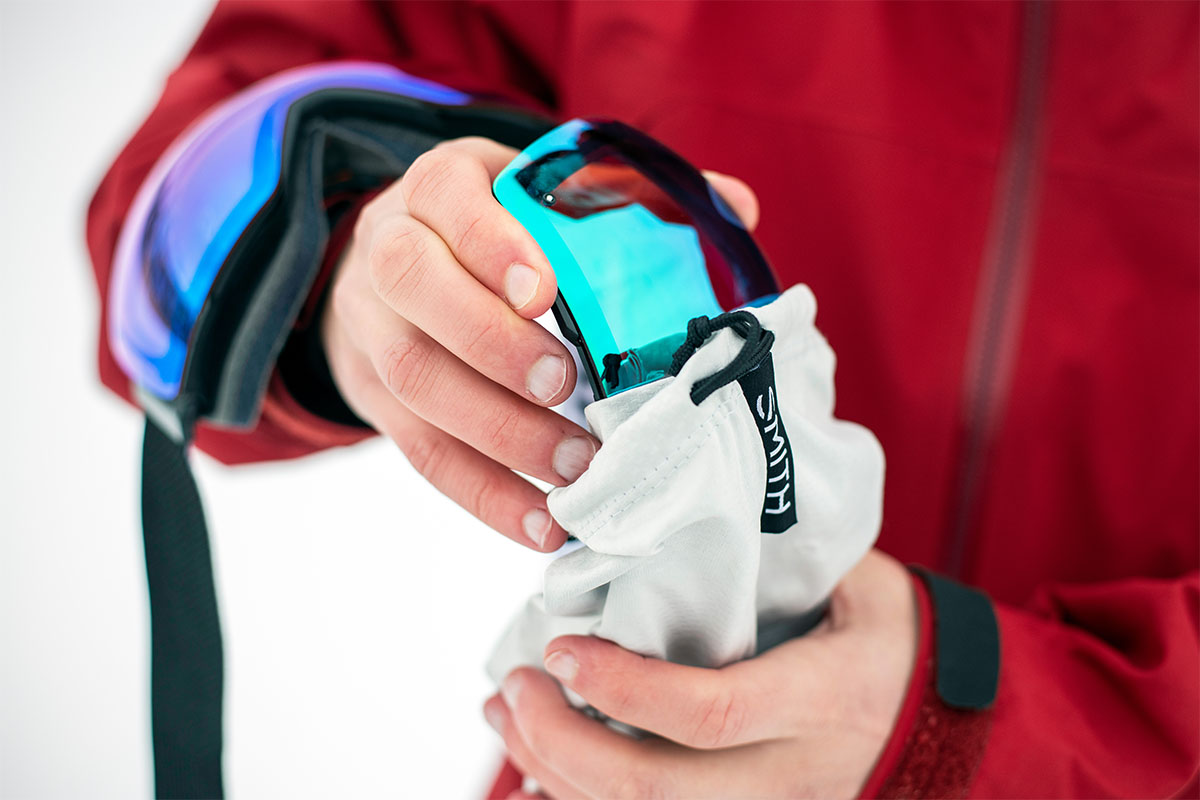
As we covered above, your goggles and ski helmet work as an integrated unit to move air up and away from your face. Moving your goggles to your forehead will cause the heat and moisture emanating from that area to fog up your lens (remember that heat rises), so it’s important to keep your goggles on during the ski day. If you’re dealing with an uncomfortable fit or visibility issues from fogging or fingerprints, we’ve found that carefully lifting them off our face slightly for a few seconds (a good chairlift activity) can make a world of difference. If it’s an ongoing problem, try popping into the nearest lodge to let your goggles dry out completely before carefully and gently dabbing or blotting any problem areas with a microfiber cloth or running them under a hand dryer (keep them a considerable distance away, as too much heat can be detrimental).
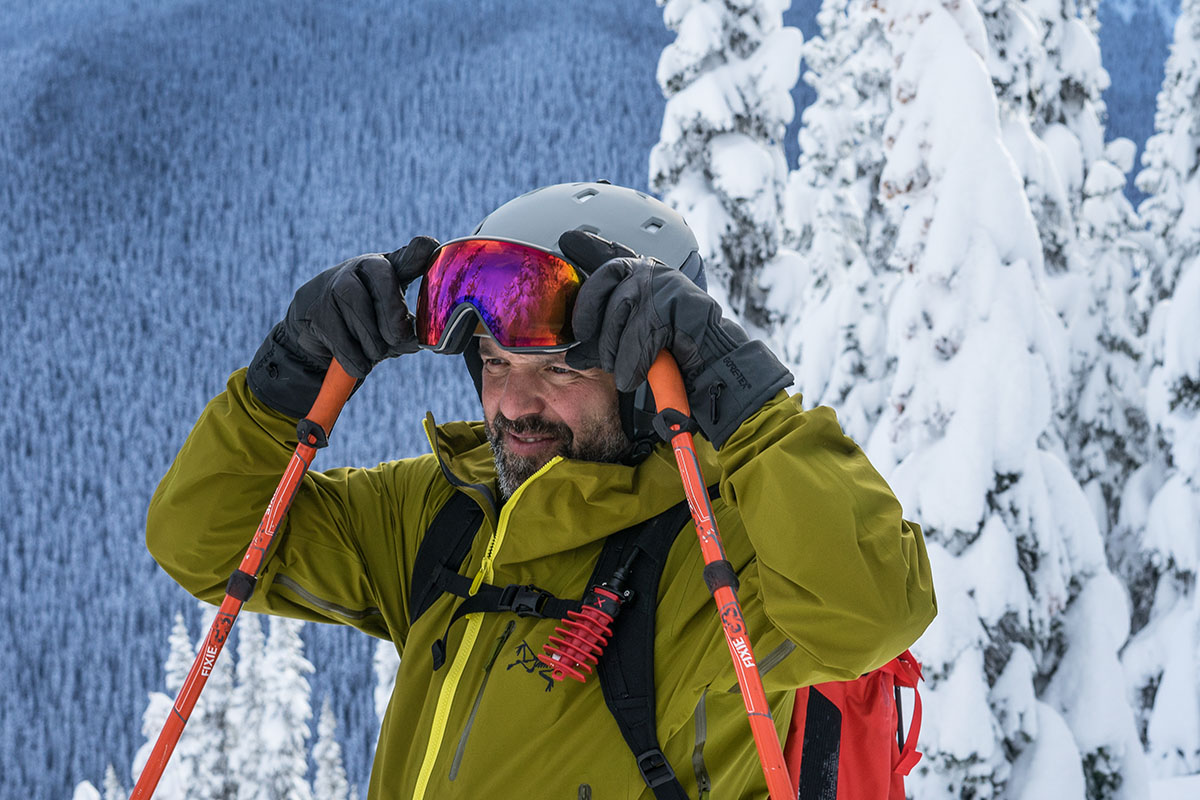
Keeping your goggle and helmet vents free of snow and other debris will help them perform at their best, as any blockage will inevitably inhibit some of the venting abilities. If your ski gloves have snow on them, be sure to brush them off before touching your face or making any adjustments to your helmet or goggles. After a fall, it might be necessary to take either or both off and carefully tap them to clear any excess moisture. And again, remember never to wipe wet goggles with gloves—this will only exacerbate fogging issues and potentially cause irreversible damage to the lens.
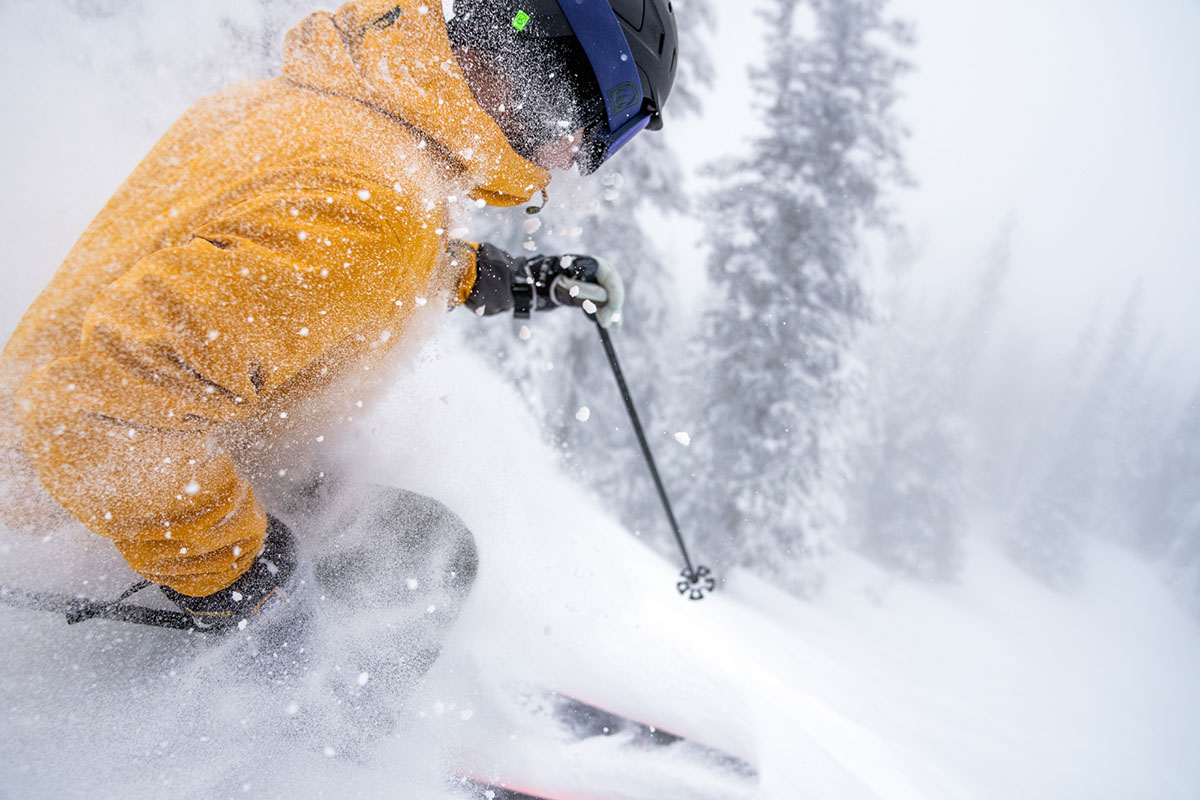
Overdressing is a quick way to build up excess heat, which will inevitably lead to condensation buildup. If your layering system isn’t tuned properly for the conditions, this can cause your body, face, and head to sweat more, which makes it harder for your goggles and helmet to keep up with temperature regulation. Our go-to ski kit typically includes a quality moisture-wicking baselayer, an appropriately insulated midlayer (fleece, down, or synthetic), and a protective and breathable hardshell or uninsulated ski jacket overtop (we look for ones with pit zips to dump excess heat quickly). Those who run cold or ski in particularly frigid areas might consider opting for an insulated ski jacket or 3-in-1 design, but we really value the ability to shed layers as conditions (and our output level) shift.
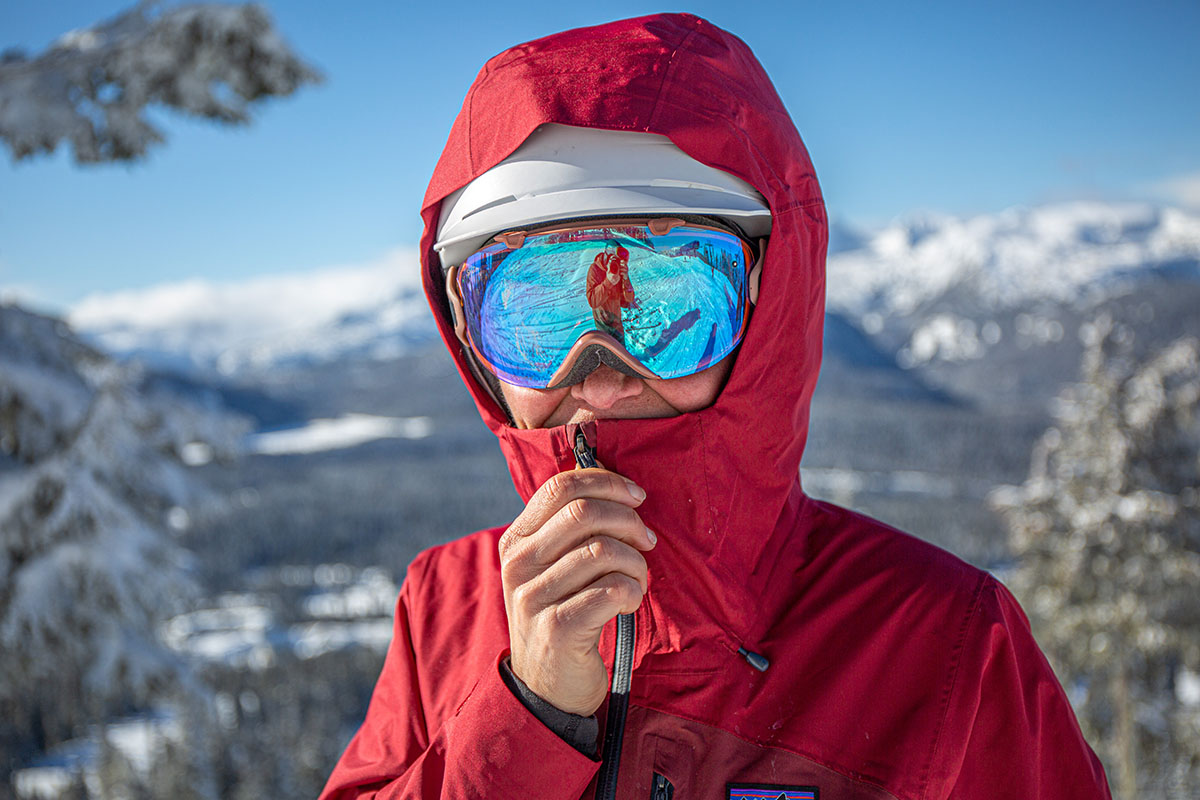
This one might seem fairly obvious, but staying in motion keeps air flowing and therefore minimizes the risk of running into fogging issues. It’s not always possible, but if you’re dealing with persistent temperature control problems, try seeking out longer runs or shorter chairlift lines. The circulation of colder air around your face will help excess moisture evaporate more quickly.
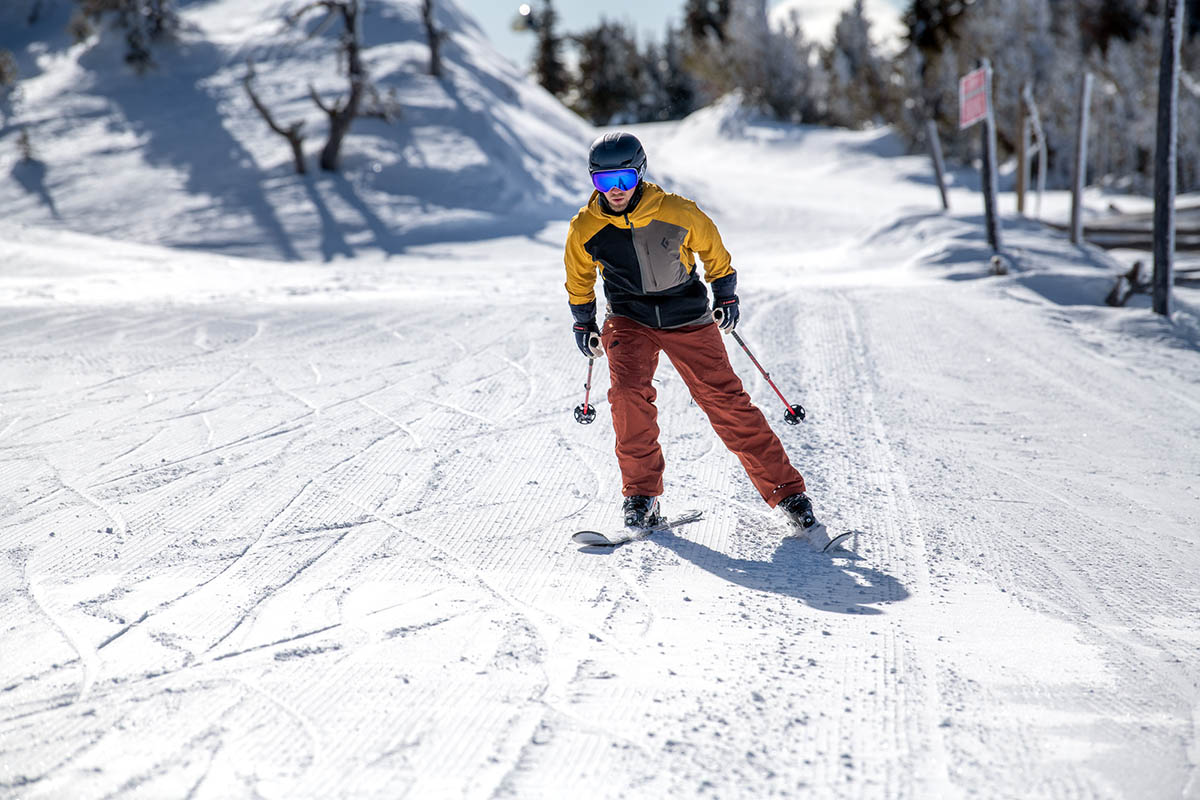
Many skiers use a buff or neck gaiter to keep their neck and lower face covered and protected from the elements, but the downside is that warm breath can sometimes be blown up into your goggles and fog up your lens. Utilizing a light and breathable design is the first step toward minimizing condensation buildup. We like Smartwool's Thermal Merino Long Neck Gaiter for its odor-resistant properties and soft feel, and Buff’s Original Multifunctional balaclava is a proven synthetic alternative that breathes very well. And a final note: You might be tempted to tuck your neck gaiter into your goggles on cold days, but this will almost inevitably lead to wet, moist particles from your breath making their way up and into your lens. If possible, keep a small gap between your goggles and mask to maintain a pathway for hot air to escape.
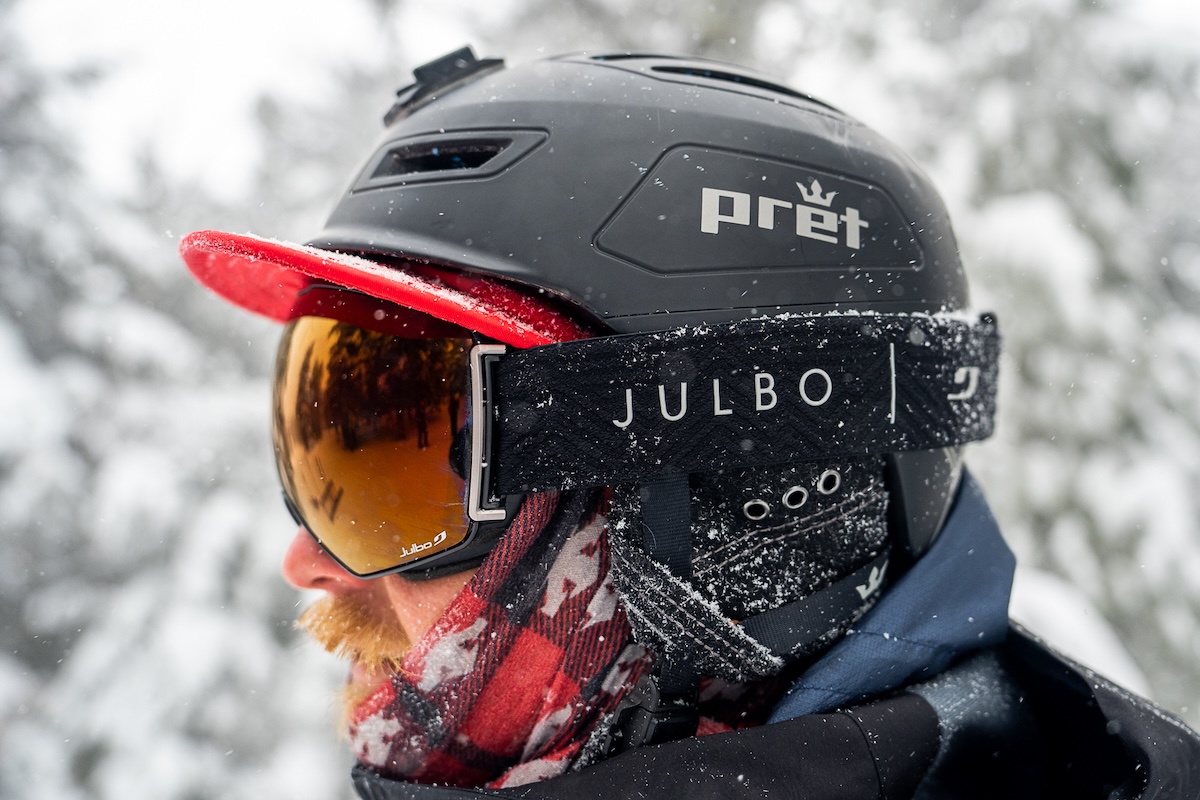
If all else fails, it’s always helpful to have a backup pair of goggles or an extra lens handy. It doesn’t have to be anything fancy—if your goggles are fogged up, even an ultra-cheap pair will probably be a step up in terms of visibility and work long enough for your go-to pair to dry out completely. Smith's Frontier is a proven budget option that will get the job done for $45 to $55 (depending on lens tint). Many high-end snow goggles also come with two lenses, so swapping them out can be a viable solution, provided the conditions allow for it (some tints aren’t suitable for socked-in or bluebird days). When making the change, just be mindful to limit contact with the lens with your hands or gloves.
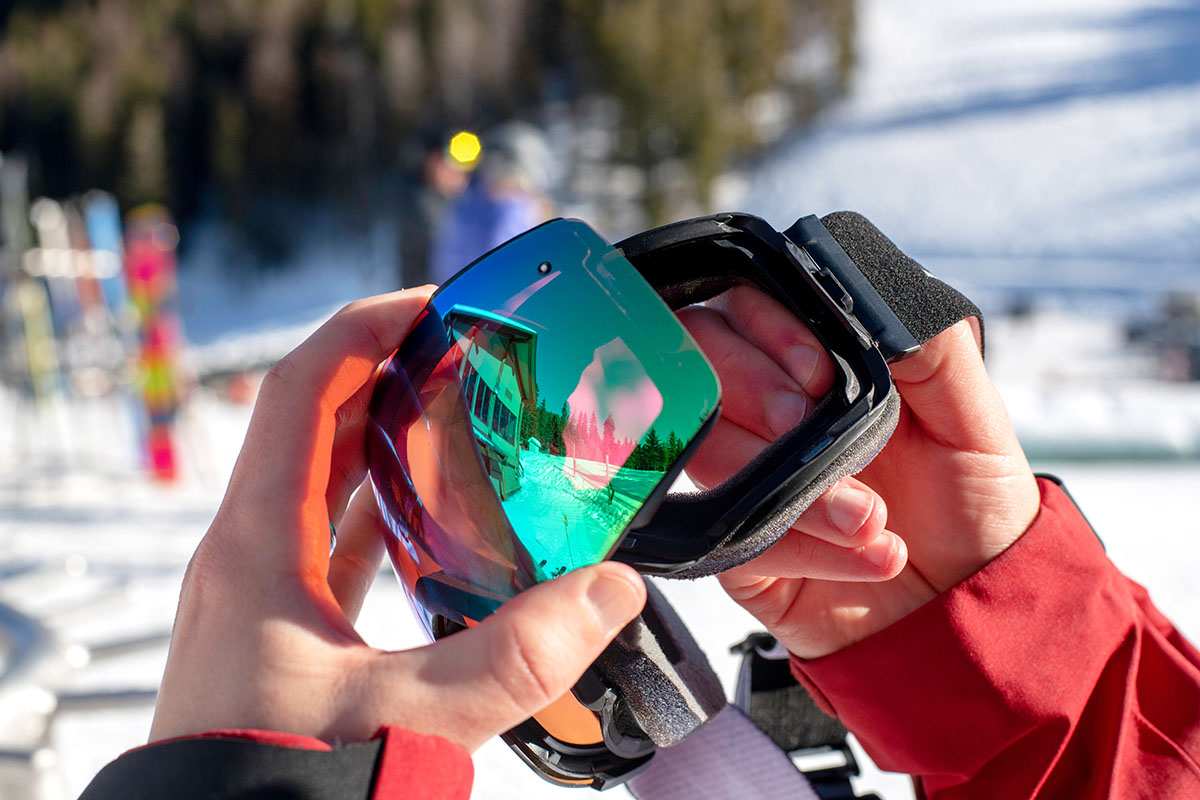
Proper care and storage are critical for keeping your goggles in prime condition, and the best practice is to let them dry completely at the end of each ski day. We advise placing them on a clean surface in a dry, warm place and letting time do the rest of the work. Be sure not to leave damp goggles in your cold car or buried in your ski bag overnight, and avoid using a blow-dryer to expedite the process (again, too much heat can potentially degrade the anti-fog treatment). Once dry, it’s best to store your goggles in a microfiber or hard-sided case to prevent dust and other debris from accumulating on the lens when not in use. This will also help limit scrapes or scratches from packing them with other gear.
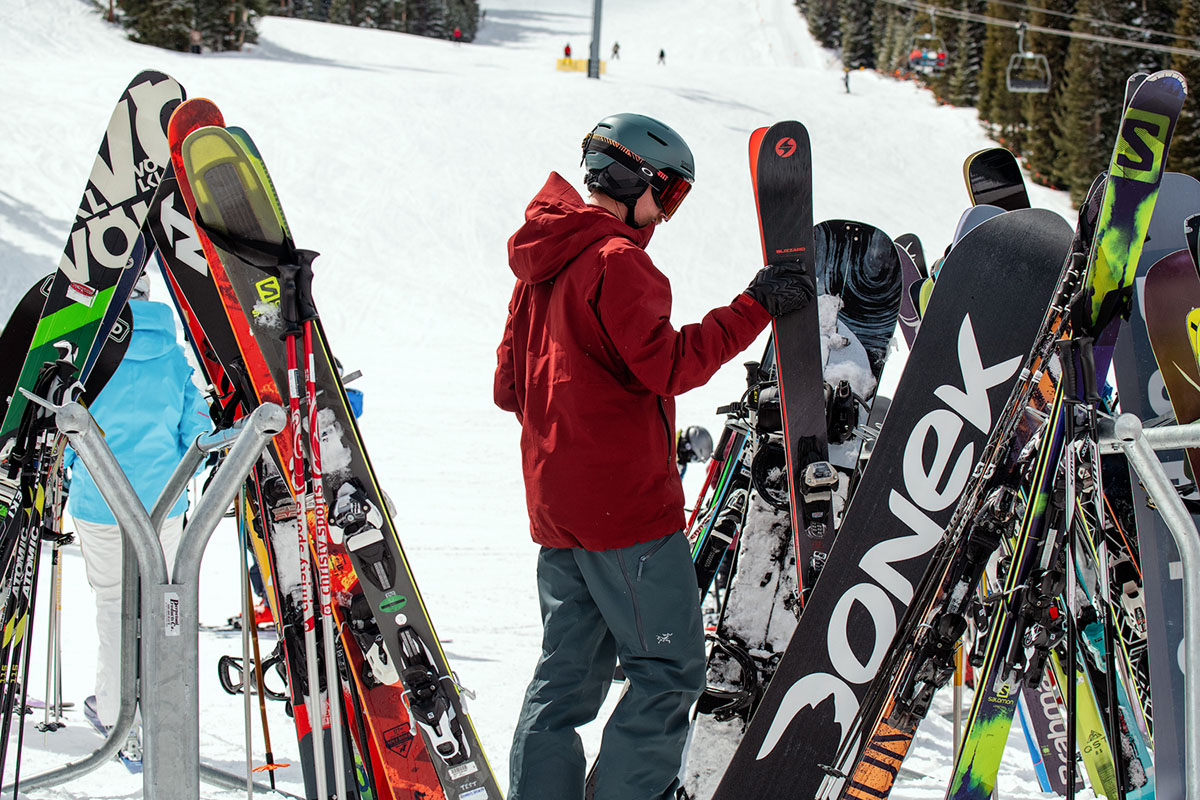
If you’re following the tips above and your old goggles continue to fog up, it may very well be time for you to purchase a new pair. For the DIY-inclined among us, however, it may be possible to get a little more life out of your goggles by reapplying an anti-fog treatment. Keep in mind that results can vary depending on factors like age and condition of your goggles, and there’s no standardized method or product for reapplication, so it could take some time to find something that works (and again, there’s a possibility that it might not for long or at all).
As a first step, we recommend reaching out to the manufacturer directly to see what they recommend. Optics specialists Warby Parker and Zeiss both make spray-on treatments with a number of good reviews to their name, and two other popular options are Optix 55’s Fog Gone and EK USA’s Cat Crap balm. Be sure to follow the instructions carefully and only use soft, nonabrasive microfiber cloths to work in any coating. If your lenses are scratched or damaged in any way, you can try polishing with a product like Meguiar's PlastX Clear Plastic Cleaner & Polish (commonly used for headlights) or PolyWatch’s Crystal Glass Polish & Scratch Remover (designed for polishing watches), but these tend to only work on minor surface scratches. In the end, the only surefire way of restoring clarity entirely is to purchase a new pair or replace the lens, but we appreciate trying to extend your gear’s lifespan for as long as possible.
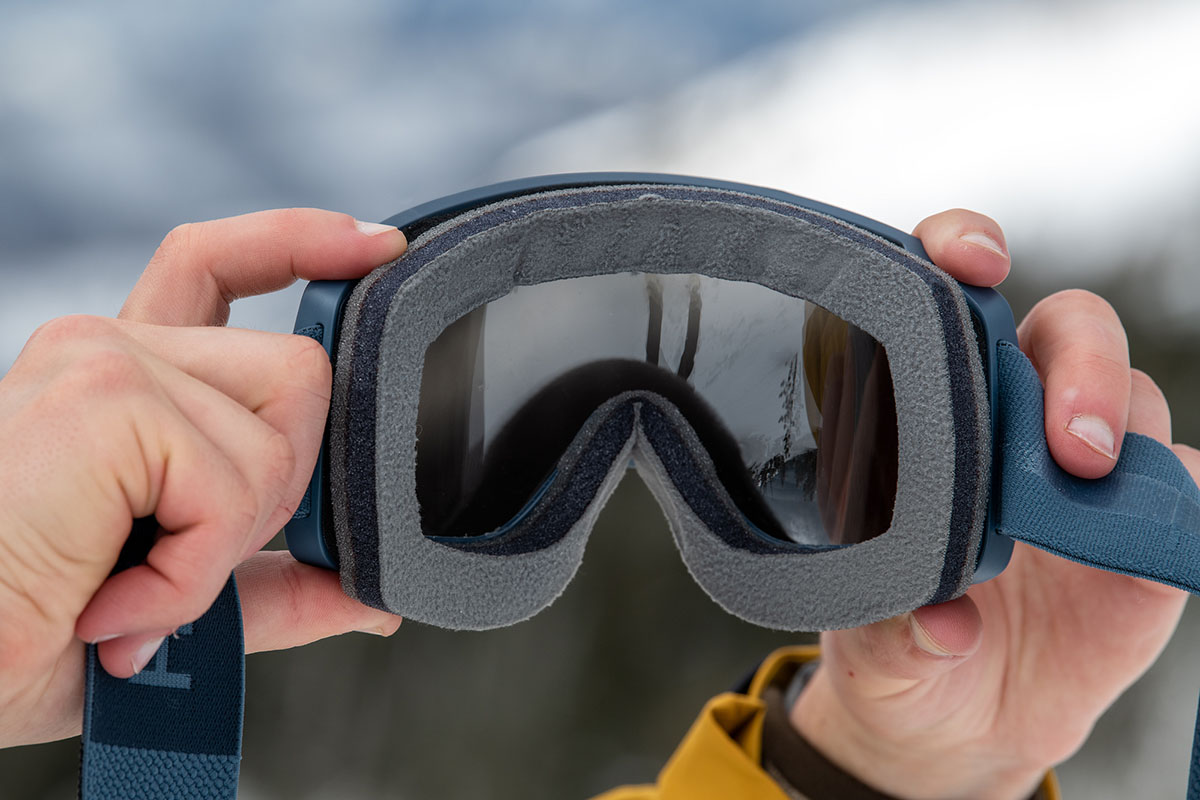
We covered anti-fog coatings above, but there are a couple of other innovative fog prevention technologies worth calling out directly. First is Julbo’s SuperFlow Pro tech found on their premium Lightyear model. With hinges on the sides of the frame, you can push the lens away to create enough separation to quickly dissipate moisture and avoid fog buildup. This is especially great for those with persistent fogging issues during down times (such as on the lift) or if you want to wear your goggles during high-output activities like ski touring or sidecountry hiking. You’ll need to push the lens back into place on the downhill, but as we covered above, fogging is less of an issue when you’re moving at a good clip.
Alternatively, there’s a small but growing segment of heated goggles on the market, such as the 509 Kingpin Ignite. These designs function similarly to the windshield defroster in your car by using heated air to prevent condensation from forming on the lens. The units are well integrated along the side of both goggles, but they do add a good amount of bulk and give off a fairly polarizing and utilitarian look.
As a final solution, some tech-savvy skiers have turned to aftermarket paintball fans, which are designed for paintball goggles or masks to minimize condensation buildup by keeping air moving. By taking a pair of standard ski goggles and tacking on the fan, the net result is very similar to Smith’s since-discontinued Turbo Fan tech featured in their I/OX Turbo Fan and tactical Outside the Wire Turbo Fan goggles. While undeniably innovative, this solution has decidedly limited appeal for most riders. If you’ve exhausted the tips above and fogging remains a consistent issue, we’d point you to Julbo’s proven SuperFlow designs—no McGyvering required.
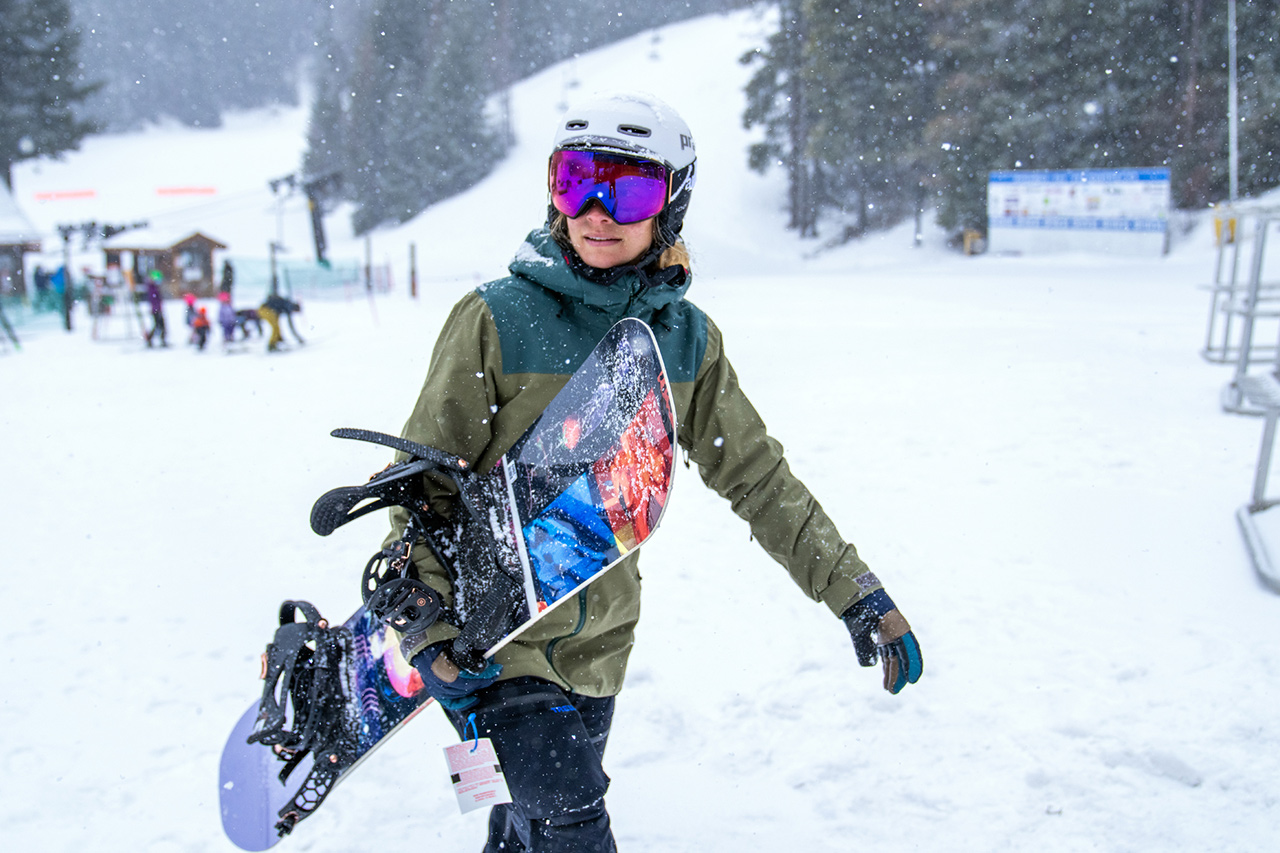
If you’re still looking for the perfect pair of goggles for this season, below are our top picks across various categories, from budget-friendly to backcountry-ready. For a more comprehensive list, as well as detailed background information and buying advice, see our article on the best ski goggles of 2025.